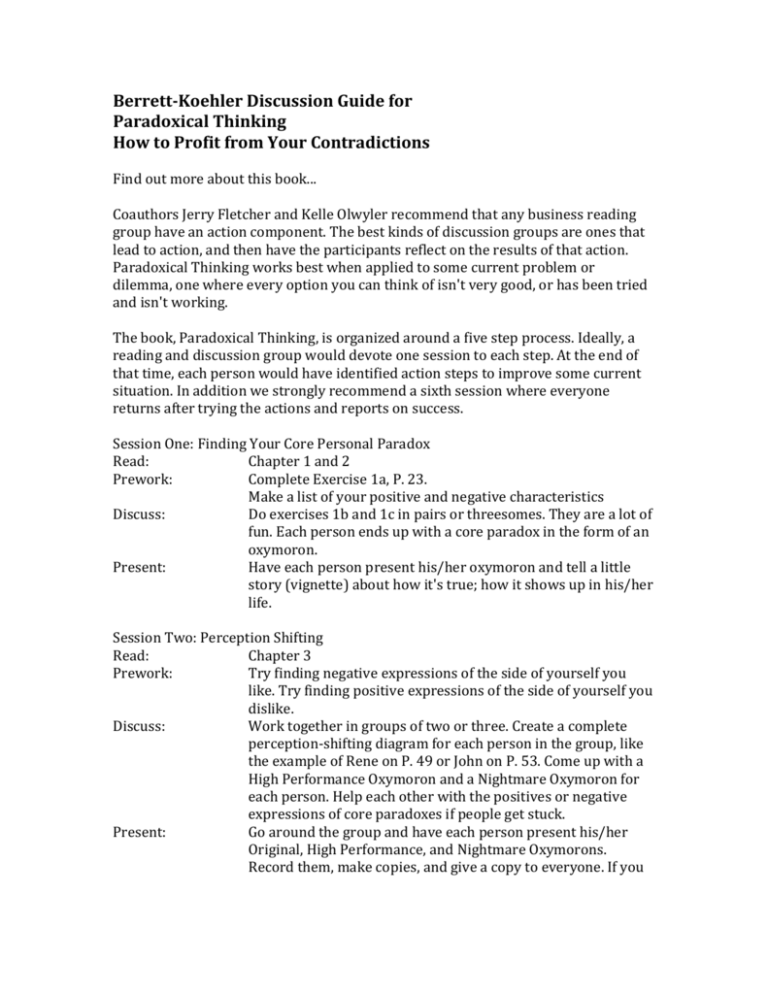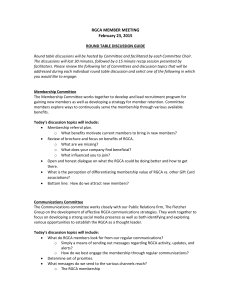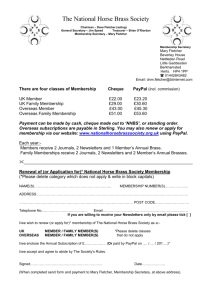Paradoxical Thinking
advertisement

Berrett-Koehler Discussion Guide for Paradoxical Thinking How to Profit from Your Contradictions Find out more about this book... Coauthors Jerry Fletcher and Kelle Olwyler recommend that any business reading group have an action component. The best kinds of discussion groups are ones that lead to action, and then have the participants reflect on the results of that action. Paradoxical Thinking works best when applied to some current problem or dilemma, one where every option you can think of isn't very good, or has been tried and isn't working. The book, Paradoxical Thinking, is organized around a five step process. Ideally, a reading and discussion group would devote one session to each step. At the end of that time, each person would have identified action steps to improve some current situation. In addition we strongly recommend a sixth session where everyone returns after trying the actions and reports on success. Session One: Finding Your Core Personal Paradox Read: Chapter 1 and 2 Prework: Complete Exercise 1a, P. 23. Make a list of your positive and negative characteristics Discuss: Do exercises 1b and 1c in pairs or threesomes. They are a lot of fun. Each person ends up with a core paradox in the form of an oxymoron. Present: Have each person present his/her oxymoron and tell a little story (vignette) about how it's true; how it shows up in his/her life. Session Two: Perception Shifting Read: Chapter 3 Prework: Try finding negative expressions of the side of yourself you like. Try finding positive expressions of the side of yourself you dislike. Discuss: Work together in groups of two or three. Create a complete perception-shifting diagram for each person in the group, like the example of Rene on P. 49 or John on P. 53. Come up with a High Performance Oxymoron and a Nightmare Oxymoron for each person. Help each other with the positives or negative expressions of core paradoxes if people get stuck. Present: Go around the group and have each person present his/her Original, High Performance, and Nightmare Oxymorons. Record them, make copies, and give a copy to everyone. If you know each other, tell stories about how the oxymorons are true in each other's lives. Session Three: Defining Your Problem Situation & Setting Your Goal Read: Chapter 4 Prework: Pick an important, current problem or goal where every choice to do something about it that you have come up with or tried isn't any good. Pick one you'd be willing to share with the group. Discuss: Work together in groups of two or three. Help each person describe his/her problem in terms of its unacceptable alternatives, what past things they have tried, and how they failed. End with a goal statement and a deadline. Present: Go around the group and have each person present his/her goal statement and deadline. Keep each other honest about picking something important, current, and needing a breakthrough way of thinking. Session Four Rating Yourself on Fletcher's Pendulum Read: Chapter 5 Prework: Set up your own personal Fletcher's Pendulum, using the sample format on P. 101. Use the examples of Rene on P. 85 or John on P. 90 for further understanding. Discuss: Work together in groups of two or three. Help each person determine what actions would be positive or negative toward their goals, and to rate their current behavior. Present: Have each person present his/her self-ratings and explain why they are what they are. Session Five: Choosing Action Steps to Improve Your Self-Ratings Read: Chapter 6 Prework: List possible action steps to increase your own self-ratings. Come prepared to discuss them. Discuss: Work together in groups of two or three. Listen to each person present his/her actions steps, why those action steps would deserve a higher rating, and critique the action steps. Brainstorm ways to improve them that fit the person's Fletcher's Pendulum even better. Present: Have each person present his/her action steps and the deadline by which they will be taken. Session Six: Reflecting on the Action Experiences Read: Chapter 13: Some Questions and Answers Prework: List your new self-ratings, after taking the actions, on a new copy of your Fletcher's Pendulum Present: Present the actions taken, how they worked, and what each person's current self-ratings are. Discuss: Brainstorm ways to use the Paradoxical Thinking methodology over and over. Also, discuss any of the Questions and Answers from Chapter 13. Fewer, Longer Sessions If a group can devote fewer sessions, combine Sessions One and Two. Skip the details of Session Three and just have each person pick a current, important problem situation. Combine Session Four and Five. Then do hold an "end of sequence" session for Reflecting. Total: Three Sessions, with participants taking action between Session Two and Three.










